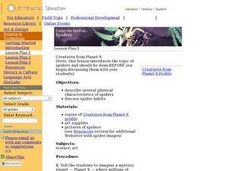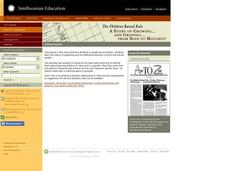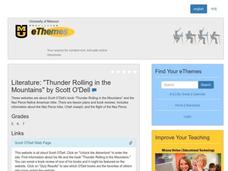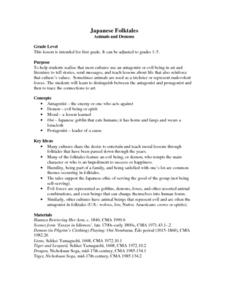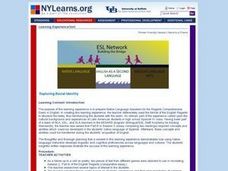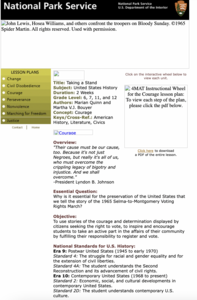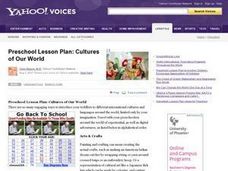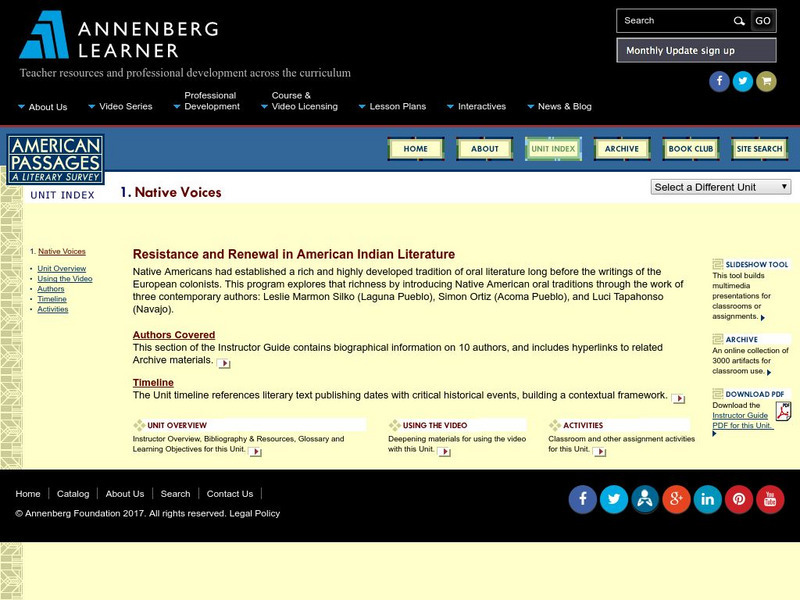Curated OER
How Things Fly
Students observe photographs of selected twentieth-century aircraft at the National Air and Space Museum and note differences in the design of aircraft wings, fuselages, and engines.
Curated OER
How Things Fly
Students, by drawing on their own experiences, discuss and examine the basic physics of flight. They participate in a variety of activities regarding flight.
Curated OER
Stories of the Wrights' Flight
Students examine and compare primary and secondary source accounts of the Wright brothers' first flights on December 17, 1903.
Curated OER
The Rocky Shore
Students compare a realistic landscape painting with a photograph of the same place.
Curated OER
Spy on a Spider
Students view slides or live specimens to name and describe the distinguishing features of groups of arthropods, especially spiders and insects. They complete worksheets, observe webs and then search for and record where spiders can be...
Curated OER
Creatures from Planet X: Spiders
Students are given a description of some fascinating animals from "Planet X". They follow the descriptions given to illustrate one of these animals paying careful attention to introduced vocabulary such as 'appendages', 'receptors', and...
Curated OER
Facts, Feats and Folklore: Spiders
Students review and discuss a variety of sayings, folklore and superstitions about spiders. They discuss this information and choose either an interesting fact or appealing foklore tradition to illustrate.
Curated OER
Baga Drum
Students examine a Baga Drum in order to explore the history of the Baga people of West Africa. In this art history lesson, students recognize figures used in Baga Drum design that represent aspects of Baga culture. They also design and...
Curated OER
Writing: Advertisements
Students explore these web pages to explore how to write good advertisements.
Curated OER
Six Trait Writing with Jack Prelutsky and the Brothers Grimm
Students identify and discuss six traits of writing and complete some beginning drawing and writing utilizing the traits. Six lessons on one page.
Curated OER
Rock Art
First graders create and share their own rock art based on Navajo and Hawaiian rock art.
Curated OER
Japanese Folktales: Animals and Demons
Students compare and contrast the stories from different cultures by studying the folktales of Japan and their use of animals and antagonist characters. Any activity in this lesson can be used as a separate lesson.
Curated OER
The Call to Greatness: A Search for Moral Integrity in the Urban Classroom
Eleventh graders read a variety of novels surrounding the theme of "greatness." In groups, they discuss various aspects of each novel and create a group bulletin board to identify and display the most important information from the...
Curated OER
Predicting the Past
Pupils study how archaeologists record the past. They discuss archaeology and artifacts. They view a list of artifacts discovered by Marquette at the Illinois Village and answer questions regarding them. They complete a test about three...
Curated OER
ESL Network: Exploring Racial Identity
Twelfth graders drill for the Regents Comprehensive Exam in English by answering questions about selected readings as preparation for writing essays. After answering the questions, they compose essays adhering to formal written Spanish...
Curated OER
Taking a Stand - 1965 Selma-to-Montgomery Voting Rights March
Students examine the 1965 Selma-to-Montgomery Voting Rights March. They view pictures reflecting their perceptions of their most important rights as citizens, write journal responses, create collages illustrating courage, and read...
Curated OER
Cultures of Our World
Students eat food, make crafts, read books, and wear costumes all to learn about another culture. In this culture lesson plan, students can also go to a museum.
Curated OER
Margaret Mead: Anthropologist
Sixth graders examine the life, travels, and cultural experiences of Margaret Mead. They participate in group work and inquiry activities about the qualities that Margaret Mead possessed and the places she traveled to. They distinguish...
Children's Museum
The Children's Museum of Indianapolis: Native Americans and the Natural World
Explore the rich cultures of Native Americans through literature, storytelling, and fun, hands-on activities. Students will gain an understanding of how and where Native Americans lived in the past and today, as well as their...
Annenberg Foundation
Annenberg Learner: American Passages: Native Voices
This unit features the rich oral tradition of Native Americans storytelling in various genres predating the introduction and influence of English writings, bringing three contemporary authors to light. RI.11-12.8 seminal U.S. texts,...
Georgia Department of Education
Ga Virtual Learning: American Literature: Colonial Literature
This lesson is an introduction to a unit on Colonial Literature including Native American oral literature and New England Puritan narratives, journals, and sermons. It features an interactive list of terms for the period, a link to the...
PBS
Pbs: Yellowstone & Native American Myths
A lesson plan aimed at grades four through six that explores the world of Native American myths.
PBS
Pbs: "Kill the Indian and Save the Man": Native American Representation
Learn about the impact of US government policies of assimilation, relocation, and urbanization on Native American identity and culture in this series of videos from the American Masters film Words from a Bear: N. Scott Momaday. Years...
Georgia Department of Education
Ga Virtual Learning: American Colonial Literature: Native American Myths
This lesson focuses on Native American myths including the creation myth "The Earth on Turtle's Back." It includes links to the above myth, a self-assessment quiz, and an assignment for a mini-report over a Native American tribe.





